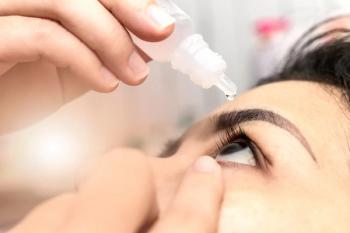
- February digital edition 2020
- Volume 12
- Issue 2
How ODs should handle non-compliance with contact lens replacement
Doctors should not blame themselves but look to better patient education and daily disposability.
Looking at studies shows that contact lens wearers continue to abuse lens wear by not following wear recommendations, care regimens, or replacement times. Even with advances in contact lens science, such non-compliance remains a significant problem. Reinforcing education and training plus prescribing daily disposables may help improve compliance.
For years I have jokingly referred to
And for that same amount of time I have blamed myself for these patients’ failings. Perhaps I am not explaining the importance of compliance, I thought, or perhaps I am not emphasizing how serious the complications of abusing their contacts could be.
Study data
So, to help clear up my angst about this situation I decided to do some quick online research.
The first study I found was among a group of young, university-based contact lens users in South India.1 Two hundred and sixteen young soft
Only 34 percent of the subjects maintained a satisfactory level of compliance. Twenty-three percent of those who participated in this study reported that they wore their lenses longer than the recommended daily wearing time. Some 5.6 percent of the contact lens wearers studied admitted they slept overnight with their contact lenses against the prescriber’s recommendations.
This mirrors the results of another study conducted around the same time in which 24 percent of wearers reported overwear of their contact lenses.2 It has long been recognized sleeping in contact lenses carries a five times greater risk of microbial keratitis compared with daily wear of lenses.
More current research
These studies were five years old. Surely things have improved since then.
The most current numbers I found were from a study conducted in Ohio,3 and the results were not much different. Of 297 subjects participating in this study, non-compliance with replacement schedule was reported in 38.7 percent of subjects. Non-compliance with prescribed overnight wear was reported in 23.9 percent of subjects in the report.
In yet another study, a total of 40 percent to 74 percent of contact lens wearers did not replace reusable contact lenses on time and in recommendation with the manufacturer’s recommended replacement frequency. In that same report approximately 6 percent of patients reported intentional overnight
I find these results amazing because eyecare professionals know the disease load is reduced by 60 percent to 70 percent by simply avoiding overnight lens use.5
To add insult to injury, subjects who were non-compliant with lens replacement were more likely to be non-compliant with overnight wear. Daily replacement wearers were most likely to be compliant with contact lens replacement, but all subjects, including daily replacement wearers, had similar overnight wear non-compliance.
There is also a disconnect between what the patient sees as acceptable compliance with
A common problem
I have figured out that patients’ non-compliance with
Although the industry has seen remarkable advances in contact lens science, noncompliance with lens-wearing schedules, replacement schedules, and lens care regimens remains a significant problem. Noncompliance is present across demographic groups and patient types.6 Because it is obviously impossible to convince all contact lens wearers to replace their lenses according to manufacturer recommendations, it is up to the contact lens practitioner to find some way to reduce the risks of
The first step is proper patient education and training. As the studies show what we feel is acceptable is quite different than what the patient believes and subsequently what the patient actually does. Constant reinforcement at the time of exam and at all follow-up visits is the first step. Asking the patient to demonstrate how he cares for his lenses often reveals care errors.
Consider switching non-compliant patients to a daily disposable lens. The 2019 Ohio Study3 showed daily replacement wearers were more compliant than two-week and monthly replacement wearers with prescribed lens replacement.
Combine this with the fact daily disposable lenses are associated with a 12.5x lower risk of corneal infiltrative events compared with reusable lenses,7 and it seems the first step is to get patients to a daily modality.
References:
1. Noushad B, Saoji Y, Bhakat P, Thomas J. Contact lens compliance among a group of young, university-based lens users in South India. Australas Med J. 2012;5(3):168-174.
2. Gyawali R, Nestha Mohamed F, Bist J, Kandel H, Marasini S, Khadka J. Compliance and hygiene behaviour among soft contact lens wearer in the Maldives. Clin Exp Optom 2014 Jan;97(1):43-47.
3. Reuff EM, Wolfe J, Bailey MD. A study of contact lens compliance in a non-clinical setting. Cont Lens Anterior Eye 2019 Oct;42(5): 557-561.
4. Ramamoorthy P, Nichols JJ. Compliance factors associated with contact lens-related dry eye. Eye Contact Lens 2014 Jan;40(1):17-22.
5. Stapleton F, Carnt N. Contact lens-related microbial keratitis: how have epidemiology and genetics helped
us with pathogenesis and prophylaxis. Eye (Lond). 2012 Feb;26(2):185-93.
6. Yeung KK, orister JF, Forister EF, Chung MY, Han S, Weissman BA. Compliance with soft contact lens replacement
schedules and associated contact lens-related ocular complications: the UCLA contact lens study. Optometry. 2010
Nov;81(11):598-607.
7. Chalmers RL, Keay L, McNally J, Kern J. Multicenter casecontrol study of the role of lens materials and care products
on the development of corneal infiltrates. Optom Vis Sci. 2012 Mar;89(3):316-25
Articles in this issue
almost 6 years ago
Prevention, artificial intelligence, and the future of optometryalmost 6 years ago
Laser vision correction: Look backward to move forwardalmost 6 years ago
Glaucoma facts: Essential perspectives for long-term managementalmost 6 years ago
Technological advancements in glaucoma managementalmost 6 years ago
Experts offer advice to ODs starting dry eye subspecialtyalmost 6 years ago
ODs must raise awareness about glaucomaalmost 6 years ago
Retinal detachment seals itselfalmost 6 years ago
The myopia epidemic: Are new therapies in sight?almost 6 years ago
Your glaucoma patients also have ocular surface diseasealmost 6 years ago
A forecast of the global ocular allergy marketNewsletter
Want more insights like this? Subscribe to Optometry Times and get clinical pearls and practice tips delivered straight to your inbox.
















































.png)


